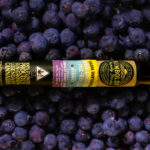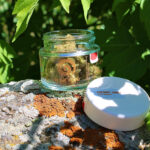Consumers, retail buyers, and marketers are putting more emphasis on brand presentation than ever before, with the results often playing a large role in a product’s success. So how do brands create packaging that both wows and serves a purpose?
Here are ten tenets to keep in mind.
1. Plan ahead
Ask any packaging professional what their number-one tip is, and all will say the same thing: Start early. Curating your final container will take consideration and lots of back and forth. In addition, depending on the production location, lead times could be weeks or even months.
Sure Lock Packaging founder Rachel Kane recommends beginning package planning alongside product development. After all, the product and its container will spend lots of time together.
2. Respect the compliance team
Compliance always should be a top priority for brands, and packaging often is a crucial piece of the puzzle. From child-resistant safety mechanisms to proper labeling, cannabis packages are under intense scrutiny from regulators. Brands must keep their lawyers and/or compliance officers in the loop at all times, especially during the packaging-design phase of development, to help prevent bottlenecks—or worse.
“You should always have your legal team put final eyes on your packaging before you go to press,” Kane said.
3. Protect the product
Packaging should be fashionable, but function is the primary objective. If your containers don’t actually keep the product inside fresh and protected, your customer loyalty rate will be zero. Kane noted some modern packaging options do a subpar job of protecting flower, so brands should do their homework before submitting an order.
“It comes down to some of the commingled plastics and hemp-derived plastics marketed as more affordable,” she said. “They have a looser poly structure, and more air can actually get in.”
4. Be creative
This one goes without saying, but don’t rip off someone else’s design. While it may not be feasible for your brand to craft a custom packaging solution, and using a basic eighth jar feels insufficient in the current environment, there are plenty of ways to be original. Work one-on-one with a packaging professional, as they often have creative skills that reach far beyond their knowledge of materials.
5. Solicit input
Packaging isn’t the responsibility of only marketing and product-development teams. Get input from a diverse group of employees from different departments and backgrounds. They may have useful suggestions the main team didn’t consider. Working with a lean team? Don’t be afraid to recruit friends and family for an informal focus group.
6. Honor the planet
Packaging waste is a serious issue, and brands must carefully consider their environmental impact. According to Kane, many containers seem recyclable at first glance but actually may end up in the landfill, depending on their composition. If sustainability is an important mission for your brand, make sure to ask your packaging provider about your options.
“If it has a film, if it’s a commingled plastic—that is, more than one class of materials—those can never be recycled,” Kane explained. “And there are quite a few packages like that in the industry.”
7. Suit the package to its contents
One of Kane’s biggest packaging pet peeves? Goods that don’t fit the shell.
“If you open a product package and it looks like there’s way too much room inside, it’s bound to disappoint the buyer,” she said.
Consider the psychology of shopping. Consumers want to feel like they’re getting good value for their money, and a half-empty container likely won’t do the trick. Plus, a smaller box may lead to a smaller production budget—always a good thing for brands.
8. Consider accessibility
Speaking of consumer satisfaction, remember that many types of people may interact with your packaging, including people with limited dexterity, arthritis pain, or other conditions that affect fine motor skills. If your containers are impossibly frustrating to open, you’ll alienate potential customers. Work with your designer to find the path of least resistance (literally).
9. Display the brand’s ethos
Remember that packaging is a chance to tell a story: your story. From the colors on the label to the typeface, each and every detail is an opportunity to share something about your brand and what it stands for. Your target audience and the message you’d like to convey should impact your design choices to set your brand apart.
10. Be mindful of retail sensibilities
Potential customers aren’t the only ones you’re trying to win over. Retail buyers and budtenders are equally important, because they’re the people who will decide your product’s fate. An eye-catching package likely will be something they want to showcase. Conversely, if your containers are run-of-the-mill or difficult to display, your brand could be relegated to the bottom shelf, if it’s presented at all.














[…] in multiple states are utilizing the practice in 2024 to regulate retail compliance issues like packaging and labeling. In March, Acting Massachusetts Cannabis Control Commission (MCCC) Chair/Commissioner […]
[…] space in a way that doesn’t look overwhelming or cluttered; that’s why we don’t have a lot of packaging on display. We want people to buy based on their conversations with our specialists and what they feel is best […]
[…] filled with AAA flower—is handcrafted and lauded for capturing the area’s unique terroir. The packaging comprises tins and glass to promote […]
[…] up at the idea of convenience, the unusual and enigmatic are remembered. Why? Because thoughtfully eclectic designs emit a powerful vibe that’s hard to resist. Such designs speak subliminally, whispering, “This […]
[…] Creating criminal offenses for transporting opened cannabis and paraphernalia packages, exceeding limitations on the quantity an individual legally may possess, and underage possession […]
[…] Source: https://mgmagazine.com/business/marketing-promo/10-commandments-of-perfect-packaging/ […]